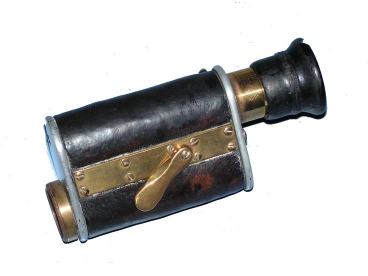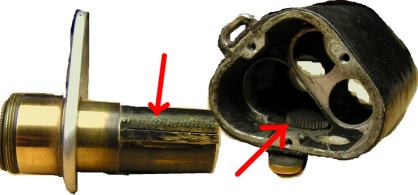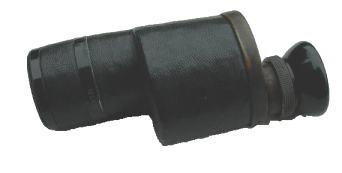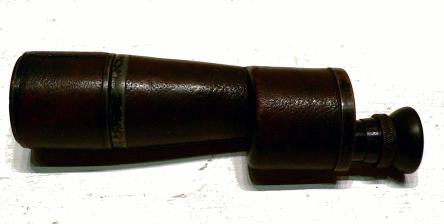

II. Monokulare um 1900 - 1945Im Folgenden werden Monokulare aus den beiden Hälften des 20. Jahrhunderts beschrieben, wobei diese in Kategorien mit bestimmten Prismen-Systemen eingeteilt werden.1. Porro-1 MonokulareEs gab viele Firmen mit verschiedenen Konstruktionsmerkmalen. Das Zeiss Patent auf stereoskopischen Effekt bleibt aufgrund der monokularen Bauweise unberührt, so dass die Zeiss-Gehäuseform übernommen werden konnte. C.P. Goerz "Triëder Monocle"Die ersten Monokulare der Berliner Firma C.P. Goerz waren die "Triëder Monocles" (3x, 6x, 9x, 12x). Sie hatten eine Hebelfokussierung wie die Porro/Hofmann-Modelle ersten Typs. Der Hebel dreht ein Zahnrad, dass eine Zahnstange am Okulartubus hin- und herschiebt und somit der Fokussierung dient. |
II. Monoculars around 1900 until 1945The following chapters describe monoculars from the two halves of th 20th century. They are categorized by prism types.Porro 1 MonocularsThe first half of the century had many makers with different construction designs, though the Zeiss body shape was often copied. Yet, being monoculars, the Zeiss patent for stereoscopic effect remained untouched.C.P. Goerz "Triëder Monocle"The first model series of monoculars by Goerz Berlin were the "Triëder Monocles" (3x, 6x, 9x, 12x). They had a focusing lever like the Porro/Hofmann models (1st variant). The lever turns a cogwheel which moves a toothed rack at the ocular tube inside, thus focusing the ocular. |


C.P. Goerz "Pernox"Die "Pernox" Monocles von Goerz (ab ca. 1905) hatten eine Geradführung des Okulars, ein unten geschlossenes Gehäuse aus Aluminiumvollguss, wobei der Prismenstuhl von oben eingesetzt wurde. Dies war die Vorwegnahme der Bausch & Lomb-Gehäuseform. Das "Pernox" gab es ebenfalls in verschiedenen Vergrößerungsstufen, wobei es auch solche als "Marinefernrohr" mit 15facher und 20facher Vergrößerung gab. |
The "Pernox" Monocles by Goerz (since c. 1905) had a linear movement of the ocular, a aluminium housing cast in one piece with no cover plate at bottom, but a prism cage mounted from the topside. This was the prior design of the Bausch & Lomb shape. The Pernox model was available with differnt power, whereas there were also models with 15x and 20x magnification named "Naval Telescopes". |


Fotos: Zeun